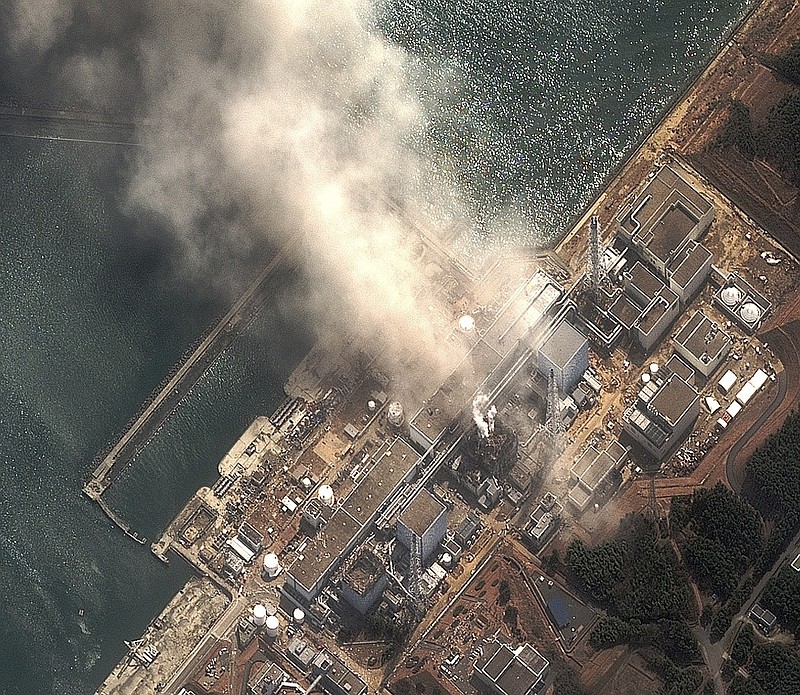CLOSER TO HOMEJapanese ties tug at local residents as crisis deepensTVA says reactors designed to handle big earthquakesRelatives seek news of loved ones in JapanAFTERMATH IN JAPANJapanese nuclear crisis raises many questions, no easy answersObama: U.S. will stand by longtime ally JapanTide of 1,000 bodies overwhelms quake-hit JapanU.S. moves ships out of path of Japan radiationStricken Japan nuclear plant rocked by 2nd blast
TOKYO - Japan's nuclear crisis verged toward catastrophe Tuesday after an explosion damaged the vessel containing the nuclear core at one reactor and a fire at another spewed large amounts of radioactive material into the air, according to the statements of Japanese government and industry officials.
In a brief address to the nation at 11 a.m. Tokyo time, Prime Minister Naoto Kan pleaded for calm, but warned that radiation had spread from the crippled reactors and there was "a very high risk" of further leakage. Fortunately, the prevailing winds were sweeping most of the plume of radioactivity out into the Pacific Ocean, rather than over populated areas.
The sudden turn of events, after an explosion Monday at one reactor and an early-morning explosion Tuesday at yet another - the third in four days at the plant - already made the crisis at the Fukushima Daiichi Nuclear Power Station the worst nuclear accident since the Chernobyl reactor disaster a quarter century ago.
It diminished hopes earlier in the day that engineers at the plant, working at tremendous personal risk, might yet succeed in cooling down the most damaged of the reactors, No. 2, by pumping in sea water. According to government statements, most of the 800 workers at the plant had been withdrawn, leaving 50 or so workers in a desperate effort to keep the cores of three stricken reactors cooled with seawater pumped by firefighting equipment, while the same crews battled to put out the fire at No. 4 reactor, which they claimed to have done just after noon Tuesday.
That fourth reactor had been turned off and was under refurbishment for months before the earthquake and tsunami hit the plant Friday. But the plant contains spent fuel rods that were removed from the reactor, and experts guessed that the pool containing those rods had run dry, allowing the rods to overheat and catch fire. That is almost as dangerous as the fuel in working reactors melting down, because the spent fuel can also spew radioactivity into the atmosphere.
After an emergency Cabinet meeting, the Japanese government told people living within about 18 miles of the Daiichi plant to stay indoors, keep their windows closed and stop using air conditioning.
The critical two questions over the next day or so are how much radioactive material is spewed into the atmosphere, and where the winds carry it. Readings reported Tuesday showed a spike of radioactivity around the plant that made the leakage categorically worse than it had been, with radiation levels measured at one point as high as 400 millisieverts an hour. Even seven minutes of exposure at that level will reach the maximum annual dose that a worker at a U.S. nuclear plant is allowed. And exposure for 75 minutes would likely lead to acute radiation sickness.
The extent of the public health risk depends on how long such elevated levels persist as well as how far and fast the radioactive materials spread, and whether the limited evacuation plan announced by the government proves sufficient.
